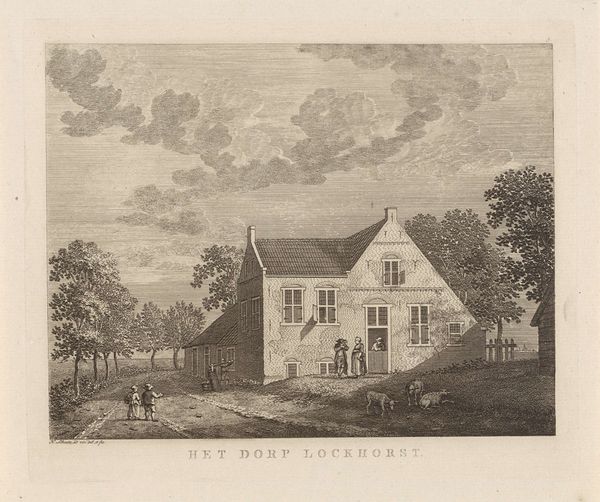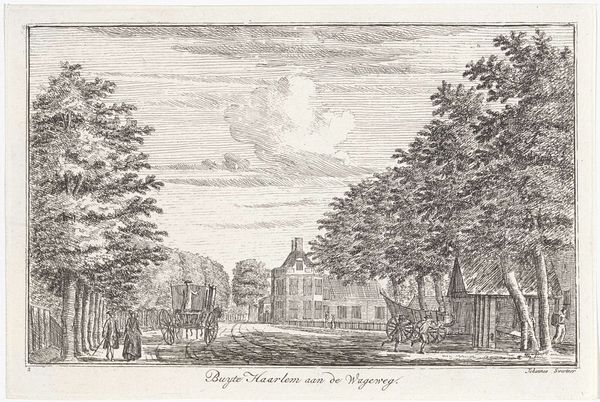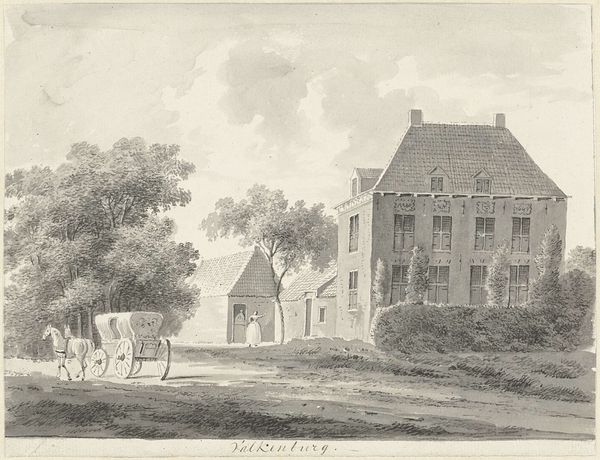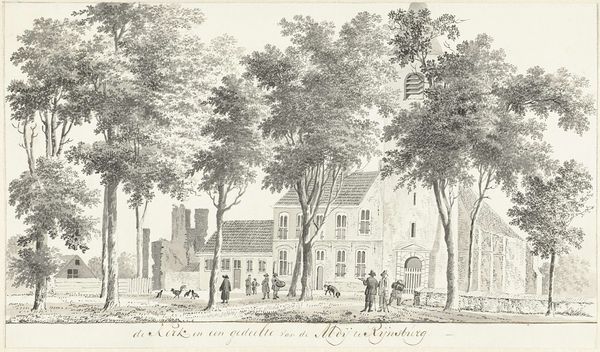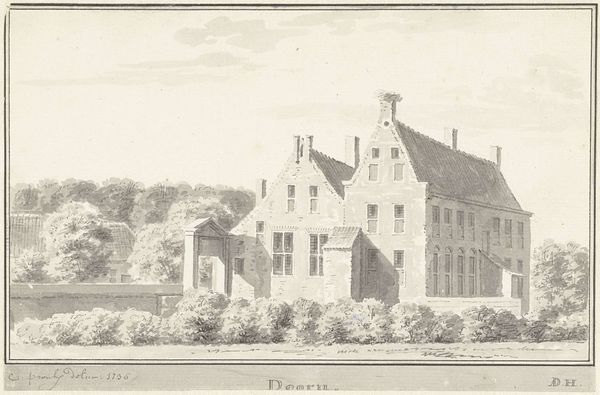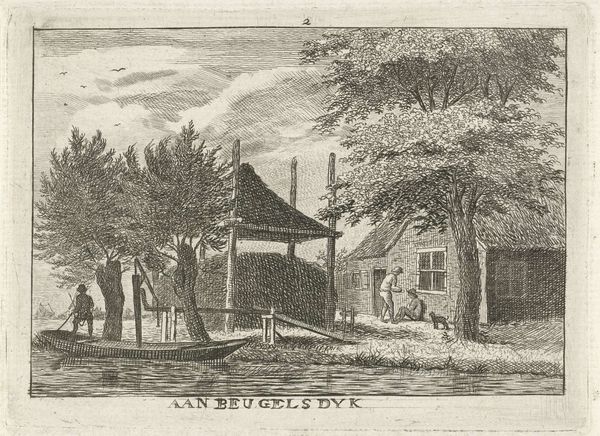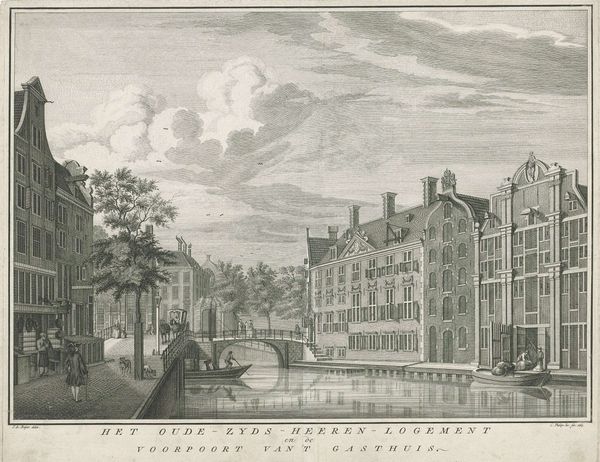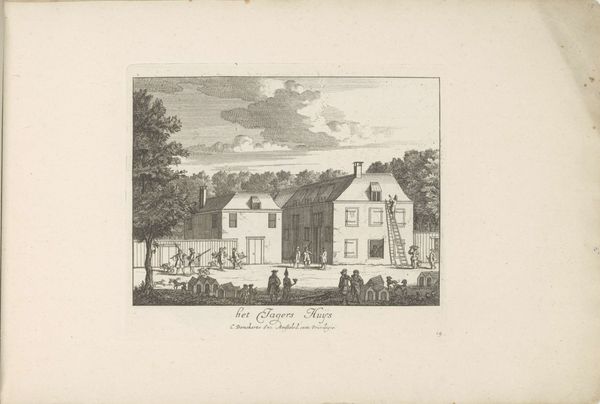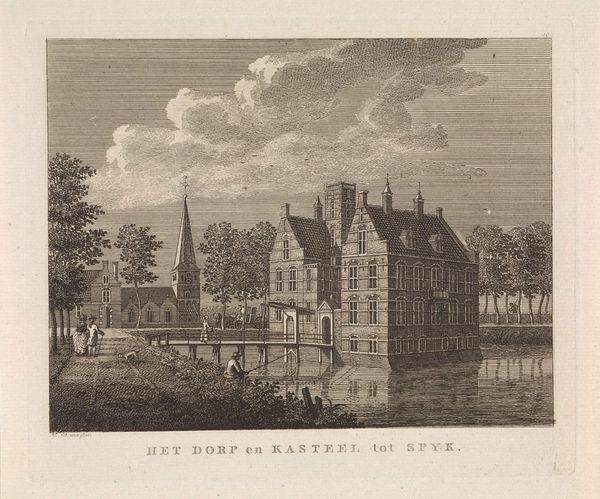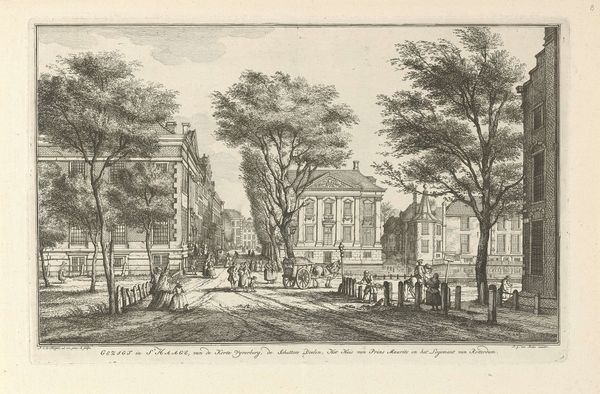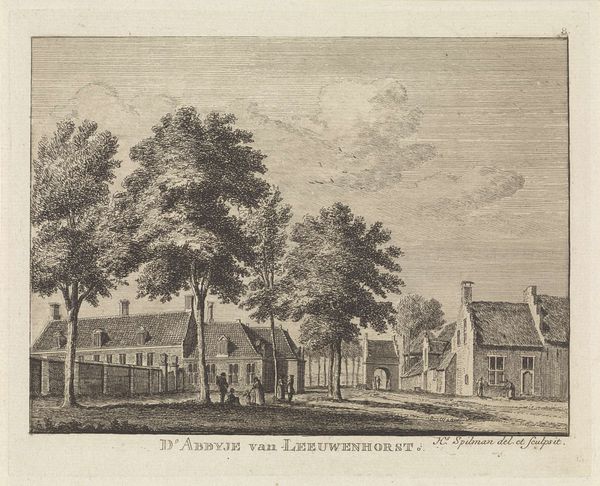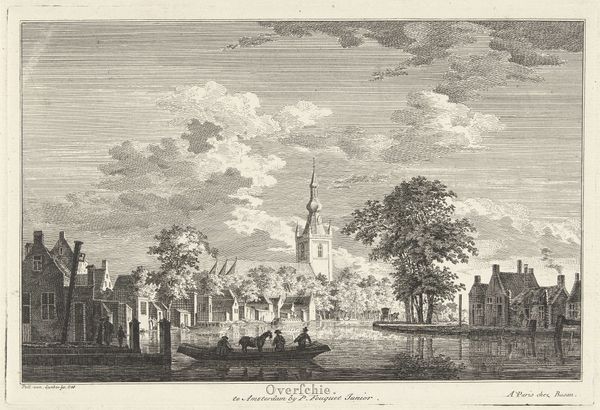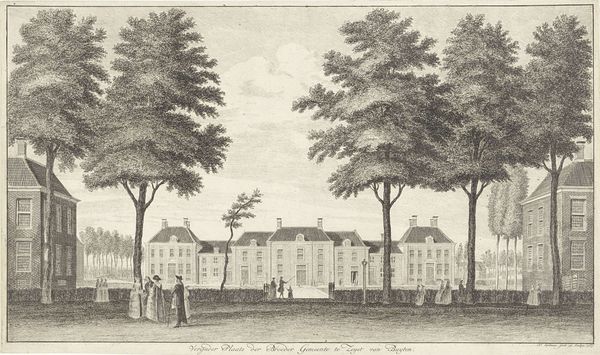
print, etching
# print
#
etching
#
landscape
#
etching
#
genre-painting
Dimensions: height 276 mm, width 372 mm
Copyright: Rijks Museum: Open Domain
Curator: It possesses an unsettling calm, doesn’t it? Something feels…off. Editor: This is "The Courtyard of the Leper Hospital in Amsterdam," an etching made around 1765 by Simon Fokke. What strikes you as unsettling? Curator: It's so orderly, almost idyllic. The light is pleasant, the trees frame the architecture nicely, people mill about… it’s incongruous considering its subject matter. Shouldn’t there be a visual marker of suffering? The scene appears ordinary. Editor: I agree it is remarkably sanitized. Leprosy carried a tremendous stigma, both religious and social. These institutions often aimed to both isolate and present a face of civic order, I think Fokke’s print does that. Note the architecture is domestic rather than overtly institutional or medical, that alone must offer solace. Curator: Yes, there’s a duality here. While ostensibly offering care, the leper house represents exclusion. Consider how carefully rendered these individuals are, yet how little emotion we read on their faces. It speaks volumes about their marginalized existence. Are the trees another form of containment? Editor: Interesting observation about the trees as enclosure. Landscape became a significant marker of national identity during this era, and neat urban landscapes signified control and progress. This controlled perspective reinforces that idea, in tension with the reality of life within the Leper Hospital walls. Curator: Exactly! Look, a mother and her children in the foreground, a soldier to the left—each appears self-contained. Is this simply a genre scene exploiting the reality of segregation to showcase Dutch social values? Or is it more insidious? I see that the horizon is almost blocked by those big, shadowy trees. Editor: That blockage contributes, I think, to the ambiguous mood. Simon Fokke may be subtly highlighting the isolation felt by its inhabitants—people caught between acceptance and ostracization, health and sickness. It also represents the changing role of institutions in response to emerging public health concerns in Amsterdam. Curator: So the tranquility itself becomes a chilling symbol of society's willingness to quietly displace what it fears, making "The Courtyard of the Leper Hospital in Amsterdam" all the more impactful through its disquieting serenity. Editor: Yes. The image holds within it an archive, recording an uneasy moment when the Age of Reason was also the age of segregation and forced removal. Thank you.
Comments
No comments
Be the first to comment and join the conversation on the ultimate creative platform.
